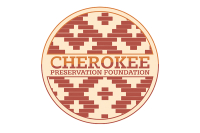Memories from ‘up at the barn’
You’ve noticed how old barns are recognized as special places? When a person says, “I’m going down to the barn,” he or she always emphasizes the “the.” That’s because each barn is a unique entity. They hold special associations. But old barns are becoming a thing of the past.
Over a year ago I clipped an article from USA Today titled “American Landscape Losing Its Old Barns” that reads, in part, “The American barn is disappearing from the landscape. It may not evoke the nostalgia of a one-room schoolhouse or covered bridge. But for more than two centuries, it has stood as a symbol of hard work and a rural way of life. These simple structures that dot the countryside are becoming victims of decay, suburban sprawl, changes in farming practices and a growing trend to use old barn wood in new ‘rustic’ buildings.
“We call them an endangered species,’ says Jennifer Goodman, executive director of the New Hampshire Preservation Alliance. ‘Barns are disappearing so rapidly, I often find myself saying, ‘Ouch. Lost another one,’ when I drive down rural roads.
“Nobody knows how many old barns exist. The Midwest once had 10,000 barns painted with Mail Pouch Tobacco advertisements — a free paint job in exchange for ad space. A few hundred remain.
“Steve Stier, who restores barns in Michigan and wrote a manual for identifying barn styles, says, ‘When an old barn falls, we lose more than a building. We lose a sense of place.’
“In trying to figure out how many barns exist, the National Trust uses the number of farms as an indicator. The United States had 6.5 million farms at the peak in 1920. There were 2.2 million farms in 2000. Including barns that survive on defunct farms, there are roughly 3 million barns across the nation. But that number is deceptive. Barns constructed after World War II are usually built with lightweight poles and metal siding. The design is inexpensive and functional.”
Related Items
Well, maybe so, but I maintain that any barn is better than no barn at all. I have myself contributed to the modern “inexpensive and functional” phase of barn building. Back in 1977, I built, with another person’s assistance, what may be the most “inexpensive and functional” barn ever erected in the Smokies region. It was concocted so as to maintain Surtees, my wife’s first horse.
All will agree that the design was basic and the materials minimal. With a bow saw we cut down eight black locust trees for poles. Four were placed in holes in the back, four in the front, each spaced at eight-foot intervals, with a three-foot span in the center to allow for a doorway in front. Accordingly, the barn is 19 feet long and eight feet wide. The rear is 10 feet high, while the front is eight feet high. The (used) tin roof has a two-foot pitch back to front. This was done because the barn is situated on a slope. We wanted the water to run off of the roof and away from the barn rather than back under it. We discovered that water goes pretty much where it wants to go.
The sides were framed with eight-foot (used) 2-by-4s placed at four and eight feet above the ground. A neighbor contributed 14 (used) 4-by-8 pieces of plywood siding that were nailed to the posts and framing. We hung an old wooden door on the front side. The floor is dirt. On one end we built a tin-roofed stall for Surtees. Total cost: $100.
Several years ago my wife purchased a second horse, Sochan, so one afternoon my son and I added another roofed stall on the other end of the barn. Then last fall my son was given some building materials that he used to add a small tack room for his mother to one side of the front entrance. The tin for the roofs of the second stall and the tack room probably cost another $100 dollars or so. So, we’re talking about a $200 barn, which certainly falls well within the “inexpensive and functional” category.
Early last winter, Surtees died at age 30 and is buried near his barn. Sochan resides there with Silver the cat. Elizabeth keeps hay in the main structure and has her saddle and lots of other gear, including feed for the horse and cat, in her new tack room.
Some wouldn’t call this juryrigged structure a barn, but we do. It has dark places and rich smells and a lot of memories. When Elizabeth tells me that she’s been “up at the barn,” I know she’s been to a place that is, for her, a special place.
George Ellison wrote the biographical introductions for the reissues of two Appalachian classics: Horace Kephart’s Our Southern Highlanders and James Mooney’s History, Myths, and Sacred Formulas of the Cherokees. In June 2005, a selection of his Back Then columns was published by The History Press in Charleston as Mountain Passages: Natural and Cultural History of Western North Carolina and the Great Smoky Mountains. Readers can contact him at P.O. Box 1262, Bryson City, N.C., 28713, or at This email address is being protected from spambots. You need JavaScript enabled to view it..









